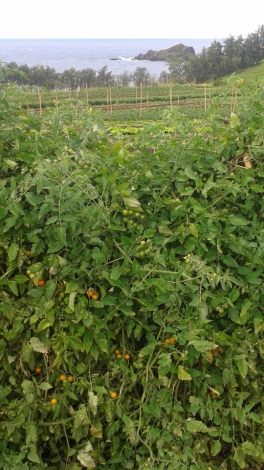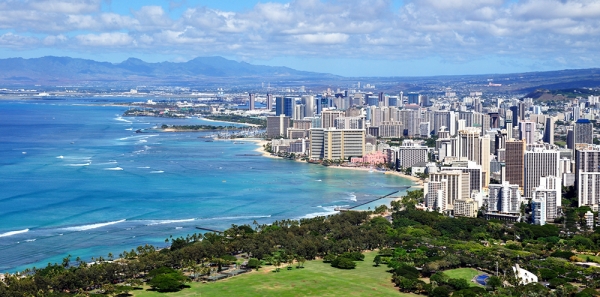Nu pierdeți cele mai bune locuri de muncă!
Abonează-te și săptămânal iți vom trimite un email cu ultimele locuri de muncă disponibile. Introdu adresa ta de email mai jos
Hawaii: the palm tree beach playground of America. The majority of people who visit these islands come for a week, maybe two, and some are lucky enough to visit every year, but very few people can imagine calling this place home. The ancient culture, utterly unique flora, and perfectly balanced climate call out to travelers looking for an exotic vacation without having to hassle with different currency and language barriers. Water, sun, and surf; the perfect combination for a quick little get-a-way from the day-to-day.
But there is another side of Hawaii that can be experienced by anyone willing to get out of their comfort zone for a bit. You don’t need to pilfer your savings to stay in beach-side resorts or book tours every day, but most experienced travelers know that’s not the case. Many people who want to work abroad in Hawaii search out jobs in the tourism industry, either teaching water sports, waitressing, or working in the resorts. But you also don’t need to slave away at an industry job to get by, if you’re willing to get your hands a little dirty.
WWOOFing is, as its name suggests, world wide. Tons of countries participate, linking hopeful volunteers to host farms that are in need of labor. For a small fee, you can navigate through the profiles of farms and apply to become a part of their community. The basic deal?: Food and shelter in exchange for a specified number of hours per week, a number that averages around 15-20 but can be as little as ten or as much as 40. The shelter can be anything from a clearing in the woods to put up your tent to rooms in a house to your own private cabin. Sometimes, food stipends are provided, while other farms allow you to eat whatever you can gather from the land. The conditions vary, as does the labor needed, so the key to a good experience is knowing what you’re signing yourself up for before you pack up all your belongings and jet off. Here are a few tips and tricks to navigate the WWOOF Hawaii website so that anyone (really, anyone) can find their ideal situation for working abroad.
1) Use WWOOF Hawaii
There’s a universal website for WWOOFing that can link you with Hawaii WWOOF farms, but there are significantly more farms participating at the Hawaii exclusive website. You can limit your search by choosing which island, the type of accommodation, food offerings, and hours, or you can scroll through the entire list and read each farms bio. You have to pay the yearly membership, about $30 U.S. dollars, to view the full profiles and apply to the farms. The WWOOF Hawaii website is a separate organization from the original one.
2) Pick your island
Each Hawaiian island has its own unique characteristics, and on each island there are different areas that will be more or less appealing to you. It’s all about preference, so research is your best friend.
- The island of Hawaii is the largest of the chain, and the only island with an active volcano. Much of the island is sparsely populated and there is a chance that you will be working on a farm that is out of the way. Hawaiian culture is said to be more intact on this island.
- Maui, the next largest island, is smaller and more densely populated. You will most likely be within driving distance of a tourist hot-spot, and you can circle the island in one day by car. There are great bars, restaurants, and amazing beaches on all sides of the island, as well as out-of-the-way locations tucked into the jungle.
- Oahu is the home of Honolulu and the famous Waikiki beach. It is the most visited island, and Honolulu is a thriving international city.
- Kauai is known for its natural beauty and eco-friendly vibe. It is smaller, and isn’t as popular with tourists.
- Molokai is the smallest of the islands with WWOOF hosts, and the most sparsely populated. There is practically no tourism here in comparison to the other islands.
I booked my ticket before I decided to apply to a farm, but I applied to farms on almost every island. Inter-island tickets are in the $50 U.S. dollar range, though, so even if you fly into Honolulu, you aren’t limited to the island of Oahu. If you are like me, and aren’t very good at making decisions, apply everywhere. Your perfect farm may not be on the island you think is most suited to you.
3) Know what you want from your farm
Of course, each farm will attempt to portray itself in the best light, but there have been cases of abusive farms looking for free labor. The WWOOF community’s main agenda is creating an environment for sharing and learning, yet some people will inevitably take advantage of this. Your best tool in analyzing the hundreds of profiles is knowing what you want, and what you think is fair. A farm that requires 40 hours of work for a tent space and no food? Probably not worth it. Do you need your own private space to be able to work efficiently? A dorm-style housing situation may not be the most ideal for you. Are you looking for a quick retreat from the daily grind? Don’t apply to a farm seeking “long-term residents.” But always remember one thing: it’s ok to put yourself out of your element once in awhile. Don’t eliminate a farm because you don’t think you can handle living in a tent or surviving on a vegetarian diet. You’d be amazed what you can gain by letting yourself be uncomfortable for a bit.
4) Scrutinize the farms
I’ve seen some outrageous profiles that are clearly shady situations, and some farms that are picture-perfect in words and turn out to be taking advantage of their workers. When picking your farm, be sure to read the profiles thoroughly before applying, don’t just copy-past to each place. If the farm is willing to describe the work-trade in detail, it’s more likely to be legitimate. It’s also important to ask the right questions before accepting a position.
- How many hours per week?
- What are the living quarters?
- What food is provided, and are you in charge of preparing your own meals?
- What sort of work will you be asked to do?
- Where are the nearest stores and what kind of transportation is available?
- If you’re looking for a long-term stay, are there opportunities on the farm or nearby to make money?
- What amenities are available on the farm? (Hot water, kitchen, internet, mobile service…?)
Brainstorm what sort of things are essential to your comfort, and be sure you ask before you sign up. If you can’t imagine showering with buckets, you’d be in for an unpleasant surprise if you signed up for three months on a farm with no hot water.
There are plenty of ways to see the Hawaiian islands, but if you’re willing to put in a little work to experience paradise from another point of view, you’ll be glad you did. There’s much more to the islands than the beaches and resorts. You don’t need any experience whatsoever, and farms take people of all backgrounds. This is your chance to see a side of paradise most people never will.
Sign in to publish a comment


Be the first to comment on this post.